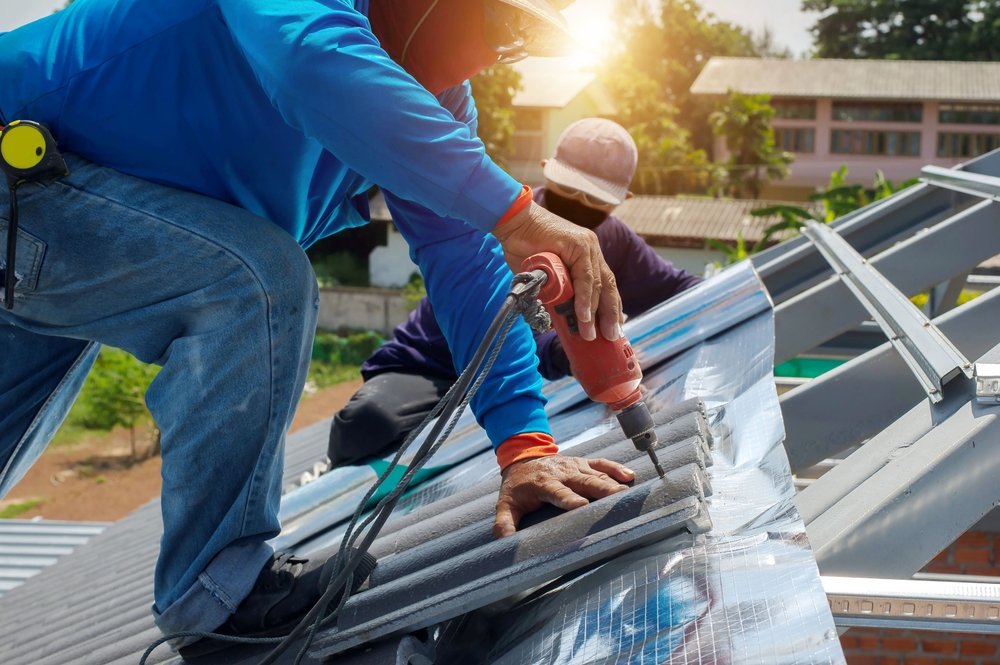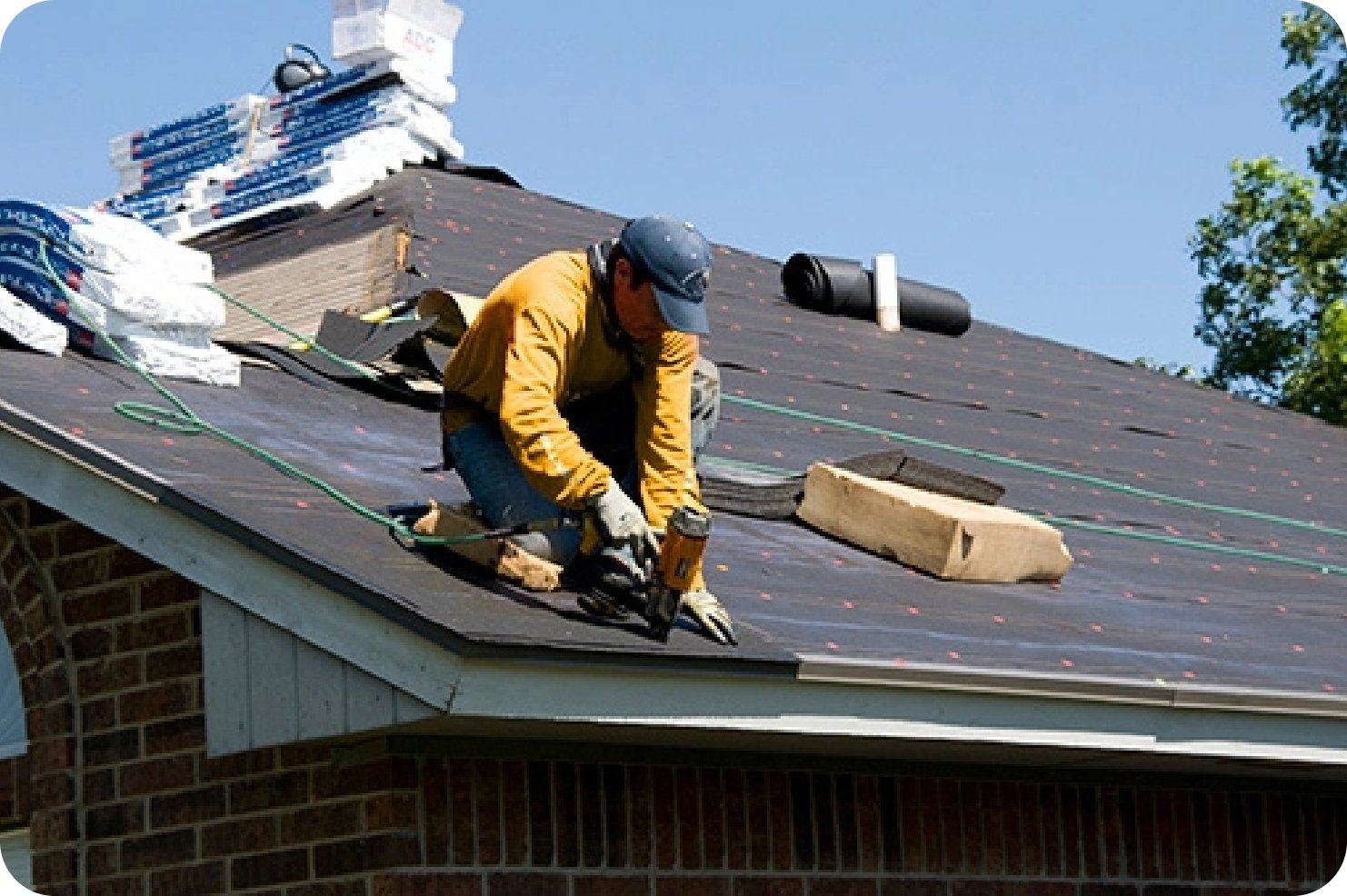Roofing Oahu: Quality Solutions for Durable Roofs in Oahu
Roofing Oahu: Quality Solutions for Durable Roofs in Oahu
Blog Article
Comprehending the Different Types of Roofing Systems: A Comprehensive Overview for Homeowners
In the realm of homeownership, choosing the suitable roof covering design is a decision that brings considerable ramifications for both capability and visual allure. With a selection of choices-- varying from the traditional gable to the modern level-- each type presents unique advantages and challenges that should straighten with the house owner's details demands and ecological factors to consider. Comprehending these distinctions not only aids in making an informed option but likewise influences lasting maintenance and energy performance. As we explore the details of various roofing system kinds, it comes to be evident that dimension does not fit all; the best selection might stun you.
Gable Roofing Systems
Gable roofs, characterized by their triangular form, are amongst the most preferred roof designs as a result of their simpleness and effectiveness in losing water and snow. This style includes 2 sloping sides that satisfy at a ridge, enabling effective drainage and reducing the threat of water buildup. The high pitch frequently related to saddleback roofs enhances their capacity to handle heavy rainfall, making them suitable for different climates.
In addition to their useful benefits, saddleback roofs provide visual versatility. They can be adjusted to numerous architectural designs, from conventional to modern-day homes. The design can additionally accommodate additional attributes such as dormer windows, which boost natural light and air flow in the attic room space.
Moreover, saddleback roofs offer adequate space for insulation, adding to power performance. Property owners can pick from a selection of roof covering products, consisting of asphalt shingles, metal, and tiles, further boosting modification choices.
Despite their advantages, saddleback roofs may need additional support in areas prone to high winds or heavy snowfall. In general, the gable roof covering stays a favored choice because of its blend of capability, longevity, and visual appeal.
Apartment Roofs
Level roofs are frequently acknowledged for their minimalist design and useful applications, particularly in commercial and industrial settings (oahu roofing). These roofings feature a straight or nearly horizontal surface area, which permits for simple building and construction and versatile room usage. While they may lack the aesthetic appeal of angled roofs, flat roofs provide numerous benefits, especially in metropolitan settings where optimizing room is essential
One of the main advantages of flat roof coverings is their ease of access. Home owners can utilize the roofing system area for various purposes, such as rooftop gardens, terraces, or solar panel installments. Additionally, level roofing systems are usually extra economical to preserve and mount contrasted to their sloped counterparts, as they call for less materials and labor.
However, flat roofings do existing particular difficulties. Correct drainage is necessary to protect against water pooling, which can bring about leaks and structural damage. Therefore, choosing top quality waterproofing products and normal examinations are vital for making sure durability. Usual materials used for flat roofings consist of built-up roof covering (BUR), customized bitumen, and single-ply membrane layers, each offering distinctive advantages. On the whole, level roofings function as a adaptable and functional selection for lots of home owners and services alike.
Hip Roofing Systems
Hip roofs are characterized by their sloped sides that merge at the top, developing a ridge. This design is distinctive from gable roofs, as all four sides of a hip roof covering incline downwards towards the walls, providing a more secure framework. The angle of the inclines can vary, permitting versatility in building looks and capability.
Among the primary benefits of hip roofs is their capability to endure heavy winds and damaging weather. The sloped surfaces enable better water drain, lowering the risk of leaks and water damage. In addition, hip roofing systems provide raised attic space, which can be made use of for storage or also exchanged livable areas.
Nevertheless, constructing a hip roof can be extra expensive and intricate than easier roof kinds, such as gable roof coverings. The added product and labor associated with developing the inclines and making sure appropriate architectural integrity can result in greater expenses. Despite these disadvantages, many property owners favor hip roof coverings for their durability, visual allure, and potential for power effectiveness.
Mansard Roofs
Mansard roof coverings, typically acknowledged by visit the website their special four-sided layout, feature two inclines on each side, with the reduced incline being steeper than the upper. This architectural style, originating from France in the 17th century, is not only visually enticing yet useful, as it maximizes the usable space in the upper floorings of a structure. The high reduced incline enables more clearance, making it an optimal choice for attics or lofts, which can be exchanged living rooms.
Mansard roofing systems are identified by their adaptability, suiting different architectural styles, from traditional to modern-day. They can be constructed with various materials, including asphalt roof shingles, slate, or steel, supplying home owners with a range of options to suit their budget plans and preferences. In addition, the design permits the assimilation of informative post dormer windows, enhancing natural light and air flow in the top levels.
Nevertheless, it is vital to take into consideration the possible downsides. Mansard roofing systems may call for more maintenance due to the intricacy of their style, and their high inclines can be challenging for snow and rain drainage. In general, mansard roofing systems combine style with usefulness, making them a preferred choice amongst house owners looking for distinct architectural functions.
Shed Roof Coverings
As house owners progressively look for simplicity and functionality in their architectural layouts, dropped roofings have arised as a prominent selection. Characterized by a solitary sloping airplane, a shed roofing provides a minimal visual that matches numerous home styles, from modern to rustic.
One of the main benefits of a shed roof is its simple construction, which usually equates to decrease labor and material expenses. This style enables reliable water drain, lowering the risk of leaks and water damages. Furthermore, the upright slope offers adequate room for skylights, improving all-natural light within the inside.
Lost roofs additionally use versatility in terms of use. They can be properly integrated right into enhancements, garages, or outside frameworks like structures and sheds. Additionally, this roofing system design can accommodate numerous roofing materials, consisting of metal, asphalt shingles, or perhaps environment-friendly roofings, straightening with environmentally get redirected here friendly initiatives.
Nevertheless, it is important to consider regional climate problems, as heavy snow lots may demand changes to the roofing's angle or structure. Generally, shed roof coverings present a useful and aesthetically pleasing option for homeowners wanting to take full advantage of performance without jeopardizing style.
Final Thought


Gable roof coverings, identified by their triangular form, are among the most popular roofing designs due to their simpleness and effectiveness in dropping water and snow. oahu roofing. The high pitch frequently associated with gable roof coverings enhances their capacity to deal with hefty rainfall, making them appropriate for various climates
While they may lack the visual allure of pitched roofings, level roofings use various advantages, particularly in metropolitan atmospheres where maximizing space is vital.

Report this page